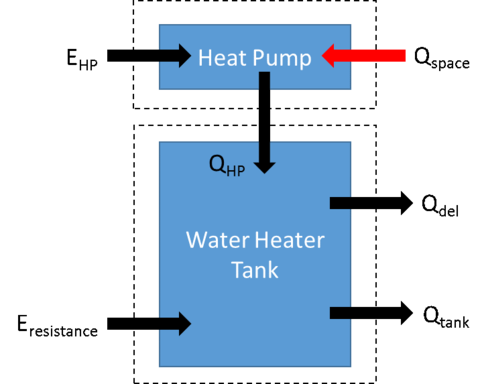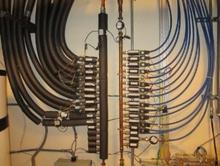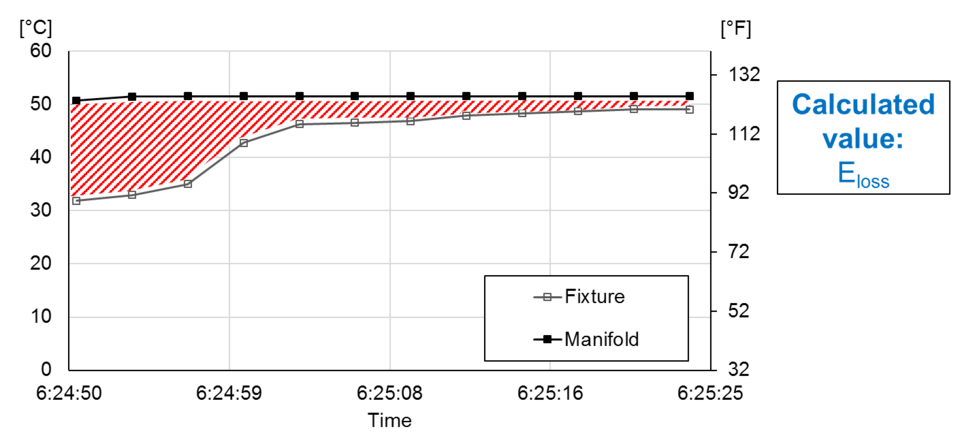Domestic Water Heating
Impact of Heat Pump Water Heater on Space Conditioning

A typical electric Heat Pump Water Heater transfers heat from the air surrounding the water heater to the water stored inside the tank via a vapor compression heat pump system. This heat pump process results in a high efficiency water heater; the process also introduces a cooling effect on the surrounding space. In the summer, this space conditioning effect is beneficial, while, during the heating season, the space cooling adds to the workload of the home’s heating system if the heat pump water heater is located inside the house. To quantify the space conditioning provided by the heat pump water heater, detailed monitoring was conducted while a unit was installed in the basement of the net-zero energy test house. In addition to monitoring the heat pump water heater, the thermal energy delivered by the central heat pump system and its energy use were also measured.
To expand the information gained from the monitoring, a few factors were varied. For example, on some days, a solar water heating system was activated to preheat the water supplied to the heat pump water heater during draws; on other days, the heat pump water heater operated alone. Several daily hot water draw schedules, with their different daily hot water volumes, were used. The water heating system configuration and daily draw schedule, once set, were repeated for three consecutive days. Three days were selected with the goal of providing replicates and to assess startup effects.
In the summer, a benefit of 8 % of the total cooling to the house was provided by the heat pump water heater when it operated without solar preheat. In the heating season, the heat pump water heater created 17 % of the total space heating load. It should be noted that the study was conducted under unusually mild winter weather conditions that led to atypically low space heating loads. As for the control factors, the use of solar preheat had the biggest impact on the space conditioning load; the daily results for most of the 3-day fixed configuration intervals were very repeatable, suggesting that future testing could use only one day for each test configuration to assess the impact.
Hot Water Distribution System Performance

Most people have experienced the excessive wait to get hot water at showers and sinks. While being an inconvenience, this delay in delivering hot water is also an energy waste. The reason for the delay is the large volume of water between the water heater and the fixture that must be flushed before the hot water reaches the fixture. When the user is done using hot water, this volume is filled with hot water that likely does not get used and simply loses heat to the surroundings. Designers of the water distribution system for the NZERTF took care to minimize the wait time and the accompanying energy waste when hot water is delivered. One aspect of this design was clustering all uses of hot water in the same quadrant of the home. Additionally, a “home-run” manifold system in which individual runs of cross-linked polyethylene piping bring hot water from the water heater to each fixture leads to a lower volume in the pipe, thereby reducing the wait time until hot water reaches the fixtures and the volume of hot water in the pipe after the use is complete.
NIST researchers delivered a presentation at the 2018 ACEEE Hot Water Forum that discussed the results from this well-designed system. The researchers found wait times until hot water reached fixtures ranged an average from 8 seconds at the kitchen sink to 34 seconds at an upstairs shower. Overall, 19 % of water throughout the year was delivered at a temperature below the threshold that would be considered usable according to the ASHRAE Handbook. As for energy loss, it was estimated that 13 % of the energy delivered by the water heater over the course of the year into the pipes was lost in the distribution system. This study provides a benchmark against which other plumbing systems can be assessed.


